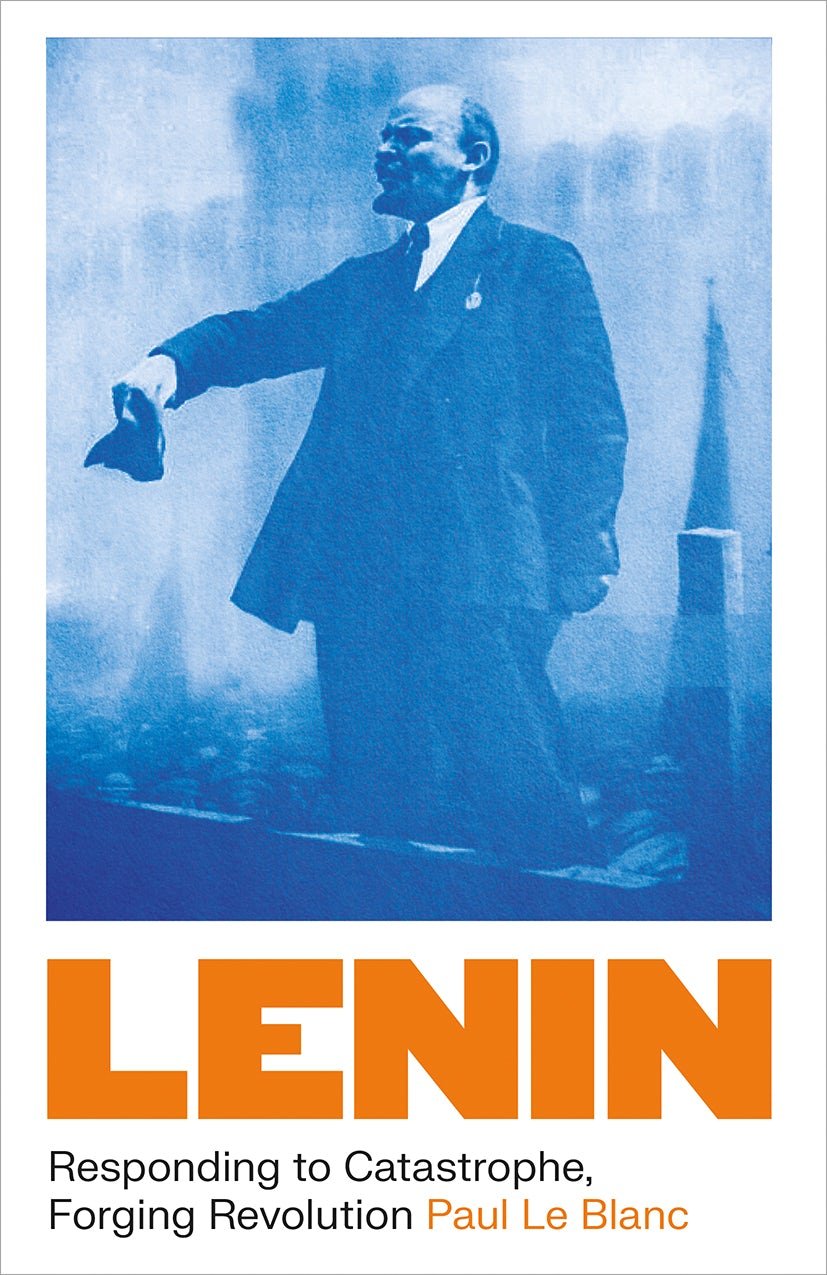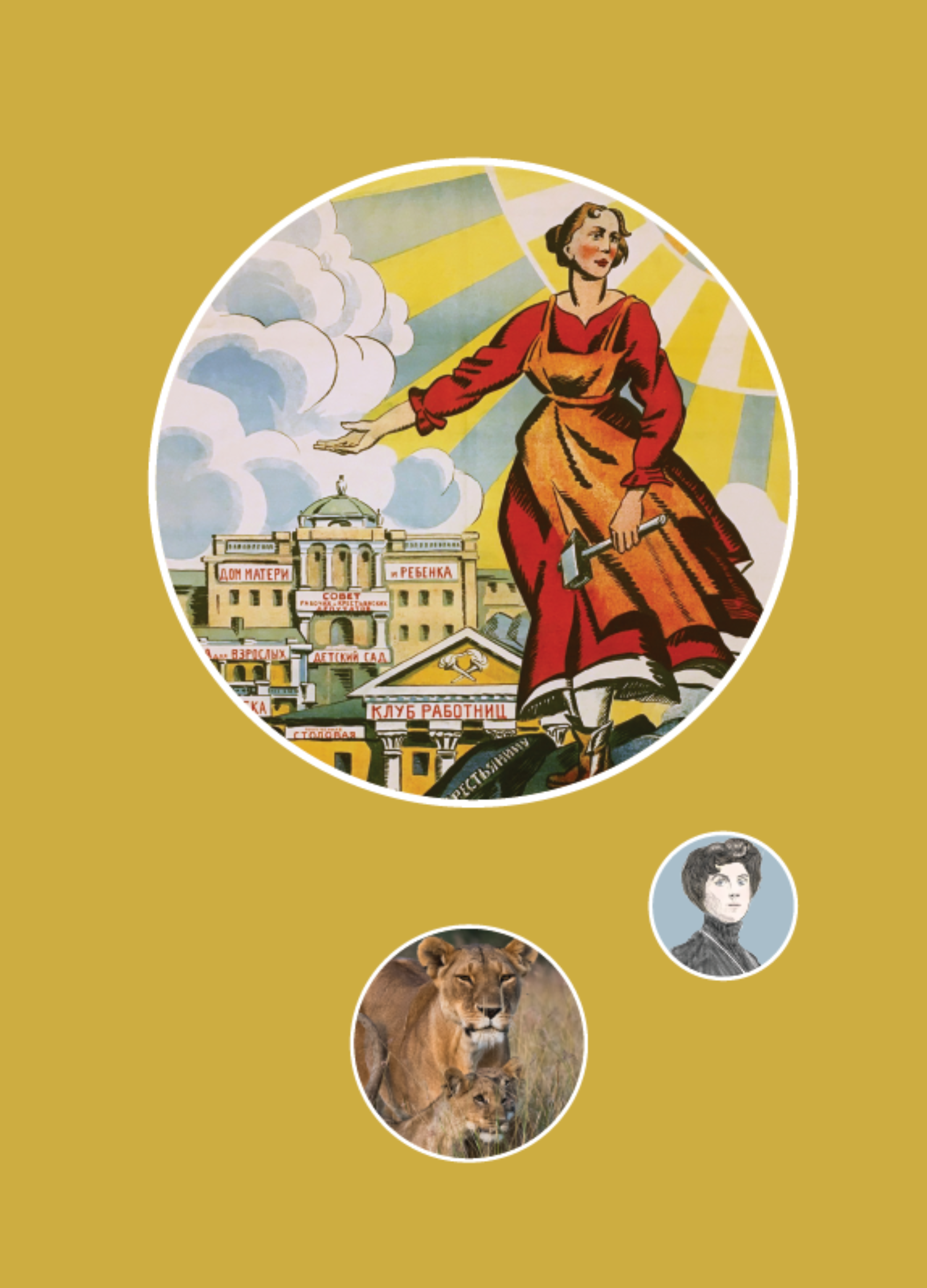Defending Lenin from 'Leninists'
Paul leBlanc’s new book ‘Lenin: Responding to Catastrophe, Forging Revolution’ is a must-read, writes Cian Prendiville
““This is an excellent book. I cannot think of a better first introduction to Lenin and ‘Leninism’.””
Lenin was a human being, just like you, with all the complexity, contradictions and changing ideas that come with that. This simple fact seems obvious, but it is sadly missing from much of the common narratives about this Russian revolutionary, which too often rush to deify or vilify.
““While other socialists were stunned by the horrors of World War One, Lenin saw the opportunity for it to give rise to a revolution””
That’s what makes leBlanc’s new biography so unique - it manages to champion the key ideas and insights of Lenin, without elevating him to an idol. It deals with complex debates and the evolution of ideas in a succinct, and subtly nuanced way, making this book the ideal first read for anyone interested in learning more about this marmite of a man.
Vladimir Ilyich Ulyanov
While leBlanc’s previous book ‘Lenin and the Revolutionary Party’ delves much deeper into many issues, this book gives a more rounded view of Lenin as a person and the experiences that shaped him. This starts right from the first chapter ‘Who Was Lenin?’ which talks about Lenin’s family and early life and how this shaped him. leBlanc deals with the execution of Lenin’s brother by the Tsarist state for ‘terrorism’, but also goes into his deep connection with his sisters, and their own political perspectives.
In this he paints a rounded picture of Vladamir Illyich Ulyanov, the man behind the pen name ‘Lenin’. On the one hand, he echoes Georg Lukács’ insight that his was a ‘Marixism in a hurry’, with a focus on revolution not as some abstract phenomenon that we wait for, but as an actual event we organise. He gives this new depth and relevance, elevating the role of ‘catastrophe’ in Lenin’s thought, discussing how while other socialists were stunned by the horrors of World War One, Lenin saw the opportunity for it to give rise to a revolution, like a phoenix from the ashes. As capitalism today drives us headlong towards climate catastrophe, this understanding has a lot to teach us.
On the other hand, leBlanc also emphasises Lenin as a collaborator, a team-builder, who was constantly learning from others. He quotes John Riddel’s claim that Lenin’s most important feature was his “capacity to build a leadership collective”. This contrasts with the ‘lone wolf’/hard man image often presented. In a funny anecdote from the 1905 revolution priest-turned-protester Fr Gapon asks Lenin for feedback on a speech, which called for abolishing Tsarism arguing “let there be one master over the land - God” Lenin responds, “write it in your own way, in your own style”. This generosity and understanding reflects a collaborative side of Lenin not often shown, leBlanc presents a revolutionary confident enough in his ideas to have open differences in the movement, and recognise that there is even a strength in that, without feeling the need to either paper over or smack down the disagreements.
Building on, and breaking from, Kautsky
leBlanc takes this same well-rounded approach when dealing with many of the big debates around Lenin’s life and ideas, taking much from the more recent research of people such as Lars Lih and Eric Blanc, while defending what I think are some of the core insights of ‘Leninism’. These authors have written extensively in recent years highlighting the continuity of thought between Lenin and figures such as the so-called ‘Pope’ of Second International Marxism, Karl Kautsky. They have poked important holes in the simplistic narratives of many Leninists, who sought to deny any positive impacts of the so-called ‘renegade Kautsky’ on Lenin or the Bolsheviks.
“leBlanc tactfully defends the key idea that while Lenin and the Bolsheviks of course took from ‘the best of Kautsky’ they also built upon it, sharpening the strongest parts and dropping it’s weaker aspects,”
However, leBlanc tactfully defends the key idea that while Lenin and the Bolsheviks of course took from ‘the best of Kautsky’ they also built upon it, sharpening the strongest parts and dropping it’s weaker aspects, developing something even stronger, that can be considered ‘Leninism’ or ‘Bolshevism’. There has been a certain neo-Kautskyist revival on the Marxist left in the last decade or so, as people reject the ‘Actually Existing Leninism’ they see in many sectarian groups, and challenge what I would call a ‘Disney Hero’ version of Lenin and the Russian revolution too often presented. However, while it might make for a ‘hot take’ to recategorise ‘Leninism’ as a mere tribute act to the OG Kautsky, this would be to lose many important and hard-earned lessons from this revolutionary period.
In that vein, leBlanc talks about how Lenin was a fan of Kautsky’s ‘Road to Power’, but added new clarity on the need to ‘smash’ the capitalist state in his ‘State and Revolution’. He highlights how Kautsky did indeed at one time speak of the potential for a revolution in Russia to break the chain of capitalism and imperialism at its weakest link, and spark European-wide revolution - but how while he moved away from this idea, Lenin (and Trotsky) built a theory and movement around that idea (see previous debate on this general topic in Rupture 6 and 7). None of this is drawn out completely in this introductory book, but for me at least that nuanced Leninism comes through.
Engaging in the debates
Similarly the book deals in a balanced manner with a number of concrete issues which have been the focus of recent debates, such as the so-called ‘re-arming of the party’ that took place on Lenin’s return to Russia in April 1917.
In the ‘Disney Leninism' telling, Lenin came back to find the party in shambles, run by incompetent leaders who were at the doorstep of reformism and betraying the revolution, and then set about single-handedly turning the party upside down to make it battle-ready. The Bolsheviks were transformed from a party supporting the existing capitalist government for fear of being ‘isolated’ to one preparing for its overthrow in a new revolution.
This simplistic narrative has been challenged, with evidence that many of those leaders who were critiqued by Lenin felt that it was their perspective that actually won out and was implemented throughout 1917, and that the only change that took place was that conditions developed allowing the Bolsheviks move on to the more radical parts of the plan they had always had. But these claims shouldn’t be exaggerated as disproving the idea, retold by numerous first-hand accounts that a change of approach, pushed by Lenin, did in fact take place. To understand this apparent ‘contradiction’, we should take on board Trotksy’s comment that healthy party debate “does not mean mutual ostracism but mutual influence”. Of course debate can lead to entrenched faction fights or even splits, but ideally debate leads to increased understanding and clarity, out of which concrete plans emerge that everyone feels they helped to shape. And if these plans turn out to be successful, of course everyone will emphasise their unique impact.
““He explains how the actual nuances in Lenin’s position helped to forge unity in the party””
LeBlanc only glances by this debate, but again his telling mounts to what I would call a nuanced Leninism. He positively quotes both Blanc and Lih’s emphasis on the shared understanding of all the Bolsheviks, but also talks about the real debate that did take place and Lenin’s victory in that debate. He explains how the actual nuances in Lenin’s position helped to forge unity in the party - he argued not for an immediate premature revolution, but for a ‘patient explanation’, winning a majority in the democratically elected revolutionary councils (‘soviets’) dominated at that time by more moderate layers. While less dramatic than the Disney version, the core of the story remains - but with added understanding of the complexity of actual organising.
Lenin the Democrat
A common theme in the book is emphasising the importance of democracy in Lenin’s thinking - both in terms of organising a revolutionary party, and a socialist society.
LeBlanc pushes back on those right-wing critics who present Lenin as some despot motivated by dictatorial aims. He talks about how Lenin saw himself as a fighter against despotism and dictatorship, and how he fought against the bureaucratisation of the Soviet Union which led to what has become known as ‘Stalinism’. He also emphasises how Lenin fought for a revolutionary party with a lively internal life full of debate and with a ‘pluralistic’ vision allowing for different tendencies and factions.
““leBlanc pushes back on those right-wing critics who present Lenin as some despot motivated by dictatorial aims””
This is a very important contribution, as both right wing and the ‘Stalinist’ historians have attempted to merge Lenin with Stalin, and present the undemocratic regime that arose in the Soviet Union as the aim of the Bolsheviks all along. However, I feel there is more to be said on the question of what exactly we mean by democracy, as this phrase has been used and abused by all manner of political movements in the last century. How does Lenin’s conception of democracy differ from bourgeois or liberal democracy? How does it relate to his revolutionary and even insurrectionary strategy for winning mass support for the Bolsheviks, or his fight to defend the workers’ state even as growing layers of the peasantry were swayed by counter-revolutionary propaganda? These more difficult questions are not delved into, but are important to debate out nonetheless.
Commit yourself, then see
This is an excellent book. I cannot think of a better first introduction to Lenin and ‘Leninism’. For those who read and enjoy it, I would also highly recommend continuing on the journey by reading leBlanc’s previous book ‘Lenin and the Revolutionary Party’ as well.
The book ends with an appeal to the reader to take action; to come together and build a ‘revolutionary collective’. Such an organisation should be committed not just to the study of ideas and theorists, but to applying and adapting them, responding to the catastrophes of today and forging a revolution in our time. While it is always easier to ask rather than answer the age-old question ‘What is to be done?’, what we cannot afford to do is wait and hope, or wallow in despair at the injustices in the world. We must commit ourselves to the fight, picking the best strategies and priorities we find, and remaining open to new and better ideas as well. As the old adage Lenin was fond of quoting goes: “On s’engage et puis… on voit” - commit yourself and then see.



